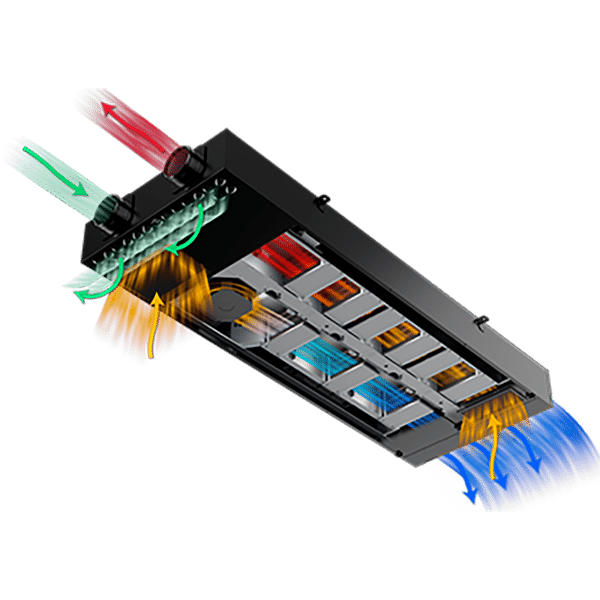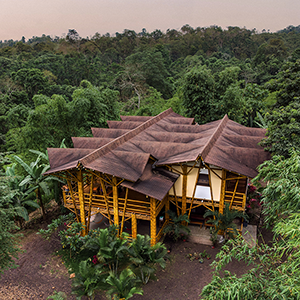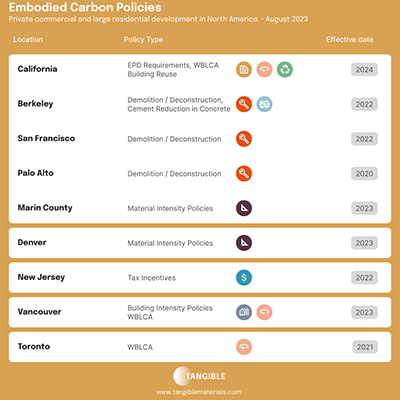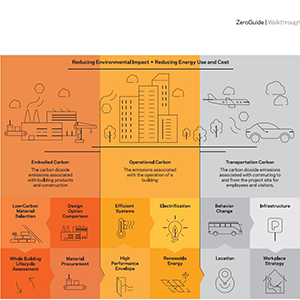by Beth Lavelle, Senior Associate, and Lindsey Kahler, Architectural/Sustainability Designer
SERA Architects has a long history of integrating performance analysis into our design work, including conceptual energy modeling, daylighting and solar analysis, as well as future climate projections. It was a natural evolution for our Sustainability Resources Group (SuRG) to take on the challenge of embodied carbon analysis of our projects and develop workflows to integrate the analysis into SERA’s design processes.
Inspired by our firm’s values, which highlight our responsibility as practitioners with significant opportunity to reduce emissions through mindful design and material selections, we at SERA began our journey of working to radically decarbonize our project work around 2019 by exploring whole building life cycle assessment (WBLCA) analysis tools like Tally and OneClick. In 2020 we began a process of analyzing our entire portfolio, expanding the work that we have done to report our operational energy for the 2030 Challenge since its inception.
More recently, SERA’s 2035 Strategic Vision articulated goals for advancing our leadership in decarbonizing the built environment, while also meeting design goals for exceptional human experiences. With this direction our SuRG team is building our capacity to integrate WBLCA processes into projects from early conceptual phases (shout out to the developers of EPIC and the CARE Tool for making early analysis easier!). We’re striving to shift our analysis workflows from a single analyst working siloed at the end of a project, to providing more real-time feedback during the design process to inform decision making. Our ultimate goal is to scale our team to multiple WBLCA analysts who are also architects, interior designers, and urban planners, and embed them within the design teams for seamless integration. We believe this embedded structure will lead to the best outcomes for embodied carbon reductions.

The evolution of SERA’s in-house WBLCA processes
As we conduct our third year of embodied carbon analysis of our entire portfolio, some patterns are emerging from our data. At a high level, we are noticing a 6% decrease in embodied carbon per square foot of our portfolio from 2020 to 2021 – even while the number of projects analyzed nearly doubled – consistent with SERA’s firm values and strategic vision goals. This information is inspiring, but in order to understand what is driving these reductions we need more data. More harmonized datasets and benchmarking will help the built environment work together to better understand how meaningful carbon reductions are made on different project types. We’re excited to be participating in Carbon Leadership Forum’s WBLCA Benchmarking Study v2, contributing our data to advance this work alongside many other firms in the US.
Our embodied carbon portfolio analysis has helped us identify data gaps, questions, and opportunities for further research. As an example, there are very few data sources that include embodied carbon information about mechanical, electrical, and plumbing systems. We are encouraged, knowing that many people are working very hard in this area currently! Additional data gaps in lifecycle stages beyond A1-A3, questions about circularity and accounting for material reuse, accounting for various end of life scenarios and biogenic carbon are all additional examples of data gaps and questions we’ve uncovered through our portfolio analysis. Acknowledging these gaps and questions has helped us critically look at current methodologies and collaborate with other firms seeing similar challenges to make a first attempt on how this data could be calculated, measured, or supplemented in future analyses.
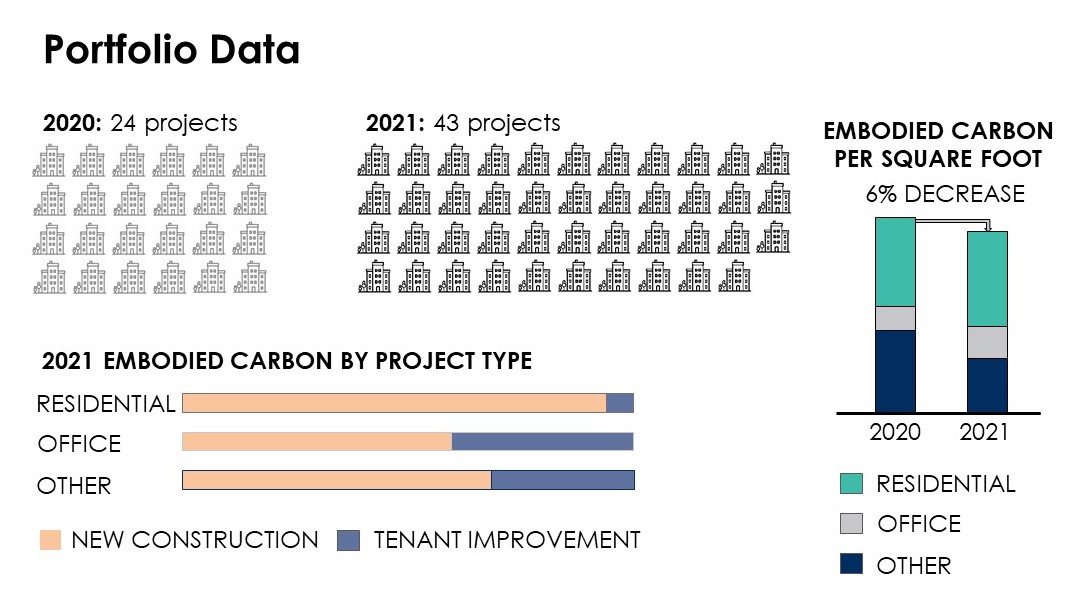
Despite the imperfect data and methodologies we see today, we see tremendous value in continuing to advance embodied carbon analysis for our projects. We have found many ways to put our preliminary data to good use, even before any data harmonization or benchmarking has been created. This work has spurred deep conversations and actions about material selections, specification updates, and refresh cycles on our projects, for example. Meaningful WBLCAs take a lot of time to develop and interpret. We are glad that we are already three years into this journey, and excited to see our firm’s embodied carbon literacy grow, helping us to develop our “gut check” intuition, allowing us to help designers across the firm navigate the embodied carbon space more nimbly. This is especially important as carbon laws and policies, requiring projects to achieve carbon reductions, are increasingly being adopted. Our project teams can also educate our clients, eventually leading to designers and clients working together to prioritize impactful carbon reduction strategies. Starting with an analysis of just one building gave us an important reference point, which has grown to result in better understanding our whole portfolio, providing a foundation for future studies and projects to build upon.
We’re excited to continue our journey to reduce the embodied emissions of our work at SERA. Our industry has ambitious goals, but also significant opportunities for reducing our climate impact, and at SERA we believe transparency, collaboration, and shared learning are the keys to success. Thanks to the Carbon Leadership Forum for facilitating all of these!

We’re excited to continue our journey to reduce the embodied emissions of our work at SERA. Our industry has ambitious goals, but also significant opportunities for reducing our climate impact, and at SERA we believe transparency, collaboration, and shared learning are the keys to success.

Beth Lavelle

Lindsay Kahler
Our embodied carbon portfolio analysis has helped us identify data gaps, questions, and opportunities for further research. As an example, there are very few data sources that include embodied carbon information about mechanical, electrical, and plumbing systems. Additional data gaps in lifecycle stages beyond A1-A3, questions about circularity and accounting for material reuse, accounting for various end of life scenarios and biogenic carbon are all additional examples of data gaps and questions we’ve uncovered.

